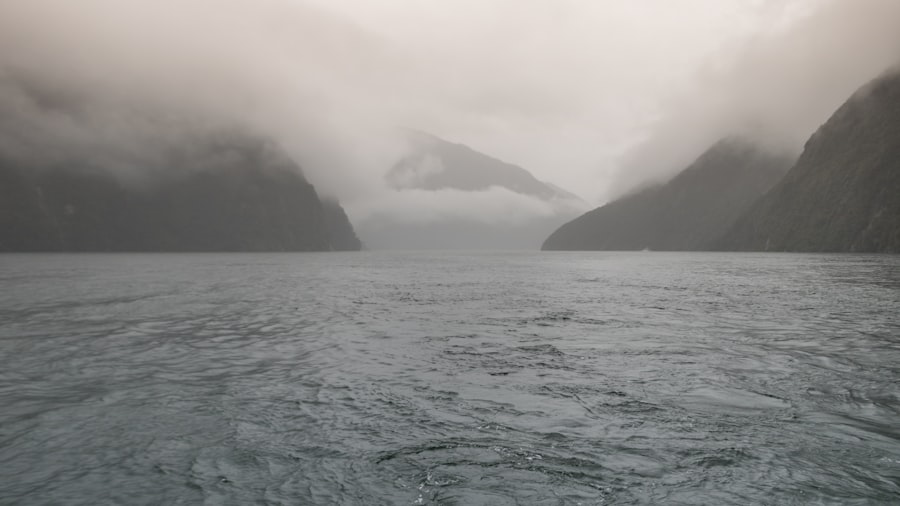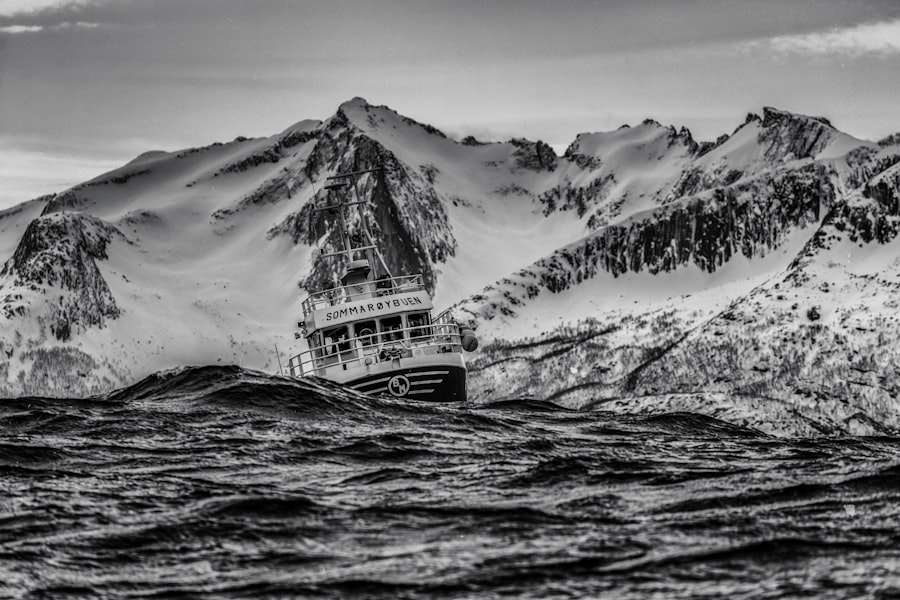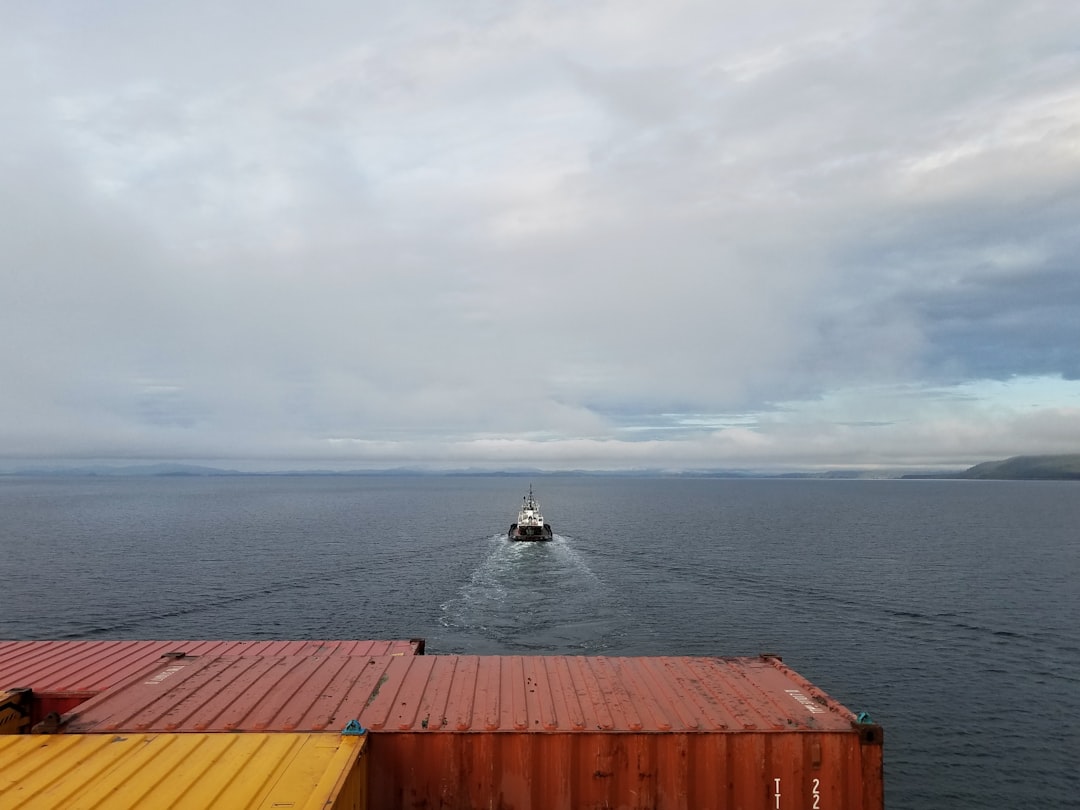The Drake Passage, a body of water that separates South America from Antarctica, is renowned for its tumultuous seas and unpredictable weather. Named after the English explorer Sir Francis Drake, who navigated these waters in the late 16th century, the passage has become a focal point for maritime exploration and scientific research.
The Drake Passage is not only a geographical marvel but also a testament to the power of nature, drawing adventurers and researchers alike to its challenging waters. The significance of the Drake Passage extends beyond its geographical boundaries. It is often referred to as the “Sailor’s Grave” due to its notorious reputation for rough seas and high winds.
This passage is a vital route for vessels traveling between the Atlantic and Pacific Oceans, making it an essential corridor for maritime trade and exploration. The unique characteristics of the Drake Passage have made it a subject of fascination for scientists studying oceanography, climate change, and marine biology. As such, it stands as a symbol of both the beauty and peril of the natural world.
Key Takeaways
- The Drake Passage is a body of water between South America’s Cape Horn and the South Shetland Islands of Antarctica, known for its turbulent seas and challenging navigation.
- The passage is characterized by strong westerly winds, large waves, and unpredictable weather, making it one of the most treacherous waterways in the world.
- The area is rich in marine life, including various species of whales, seals, and seabirds, making it a popular destination for wildlife enthusiasts and researchers.
- Navigating the Drake Passage poses significant challenges for ships, with the potential for extreme weather conditions and the risk of encountering icebergs and rough seas.
- Despite its dangers, the Drake Passage is a crucial area for scientific research, providing valuable insights into climate patterns and oceanic processes that impact global climate systems.
Geographic features of the Drake Passage
The geographic features of the Drake Passage are as diverse as they are striking. The passage is characterized by deep oceanic trenches, steep underwater ridges, and a complex network of currents that contribute to its dynamic environment. The continental shelf surrounding the passage is relatively narrow, leading to steep drops into the abyssal depths of the Southern Ocean.
This topography creates a unique habitat for various marine species and influences the movement of water masses in the region. One of the most notable features of the Drake Passage is the Antarctic Circumpolar Current, which flows uninterrupted around Antarctica. This current is the world’s largest ocean current and plays a crucial role in regulating global climate patterns by redistributing heat and nutrients across the oceans.
The interaction between this current and the surrounding waters creates a rich tapestry of marine ecosystems, making the Drake Passage a hotspot for biodiversity.
Climate and weather patterns in the Drake Passage

The climate of the Drake Passage is notoriously volatile, characterized by rapid changes in weather conditions that can occur within hours. The region experiences strong winds, heavy precipitation, and frequent storms, making it one of the most challenging maritime environments in the world. The convergence of cold polar air from Antarctica and warmer air from the north creates a dynamic atmosphere that can lead to sudden squalls and turbulent seas.
Sailors navigating these waters must be prepared for anything, as conditions can shift dramatically without warning. Temperature variations in the Drake Passage are also significant, with average sea temperatures ranging from -2°C (28°F) in winter to 10°C (50°F) in summer. These fluctuations influence not only weather patterns but also marine life in the region.
The cold waters are rich in nutrients, supporting a diverse array of species that thrive in this harsh environment. Understanding the climate and weather patterns of the Drake Passage is essential for researchers studying climate change, as it serves as an indicator of broader environmental shifts occurring globally.
Historical significance and exploration of the Drake Passage
| Expedition | Year | Significance |
|---|---|---|
| Francis Drake’s voyage | 1578-1580 | First Englishman to navigate the passage |
| James Cook’s expedition | 1773-1774 | First to cross the Antarctic Circle and explore the passage |
| Scientific exploration | 20th century | Contributed to understanding of ocean currents and marine life |
The historical significance of the Drake Passage cannot be overstated. It has long been a critical route for explorers seeking to navigate between the Atlantic and Pacific Oceans. Sir Francis Drake’s expedition in 1578 marked one of the first recorded passages through these treacherous waters, paving the way for future explorers and traders.
Over the centuries, numerous expeditions have ventured into the Drake Passage, each contributing to our understanding of this formidable region. In addition to its role in exploration, the Drake Passage has been pivotal in shaping maritime trade routes. The passage became increasingly important during the Age of Sail when ships sought faster routes to reach new markets.
The challenges posed by its unpredictable weather and rough seas have led to advancements in navigation technology and maritime safety protocols. Today, the legacy of those early explorers continues to influence modern navigation practices, as mariners learn from their experiences while traversing this historic waterway.
Wildlife and marine life in the Drake Passage
The Drake Passage is home to an astonishing array of wildlife and marine life, making it one of the most biodiverse regions on Earth. The nutrient-rich waters support vast populations of krill, which serve as a crucial food source for many species, including whales, seals, and seabirds. Among the most iconic inhabitants are humpback whales, orcas, and various species of penguins that thrive in this harsh yet bountiful environment.
Birdwatchers flock to the Drake Passage to observe its diverse avian population, which includes albatrosses, petrels, and skuas. These birds are well-adapted to life at sea, often traveling great distances in search of food. The presence of such a rich variety of wildlife highlights the ecological importance of the Drake Passage and underscores the need for conservation efforts to protect these fragile ecosystems from human impact.
The deadly nature of the Drake Passage

The Drake Passage has earned its reputation as one of the most dangerous bodies of water in the world due to its treacherous conditions. Sailors have long recounted tales of ships being tossed about by towering waves and fierce winds that can reach speeds of over 100 kilometers per hour (62 miles per hour). The combination of strong currents, unpredictable weather patterns, and shallow underwater topography creates an environment where even experienced mariners can find themselves in perilous situations.
The passage’s deadly nature has led to numerous maritime disasters throughout history. Ships have capsized or been lost at sea due to sudden storms or navigational errors exacerbated by poor visibility. This reputation has instilled a sense of respect among those who dare to traverse its waters, reminding them that nature’s power can be both awe-inspiring and terrifying.
Challenges of navigating the Drake Passage
Navigating the Drake Passage presents numerous challenges that require skill, experience, and careful planning. The unpredictable weather patterns can create hazardous conditions that demand constant vigilance from crew members. Sudden squalls can arise without warning, leading to rough seas that can make steering difficult and increase the risk of capsizing.
In addition to weather-related challenges, navigators must contend with strong currents that can affect their course and speed. The Antarctic Circumpolar Current flows relentlessly through these waters, creating eddies and whirlpools that can complicate navigation efforts. Mariners must be adept at using advanced navigation tools and techniques to ensure safe passage through this formidable stretch of ocean.
Notable shipwrecks and disasters in the Drake Passage
The history of maritime travel through the Drake Passage is marked by notable shipwrecks and disasters that serve as reminders of its perilous nature. One infamous incident occurred in 1914 when the passenger liner SS Orinoco sank after hitting an iceberg while navigating these treacherous waters. The loss of life was significant, prompting changes in safety regulations for vessels operating in icy regions.
Another tragic event took place in 1982 when the fishing vessel MV Taimyr sank during a storm in the Drake Passage. Despite rescue efforts, many crew members perished in the frigid waters. Such incidents underscore not only the dangers associated with navigating this passage but also highlight the importance of implementing stringent safety measures for vessels operating in these challenging conditions.
Scientific research and studies in the Drake Passage
The Drake Passage has become a focal point for scientific research due to its unique ecological characteristics and role in global climate systems. Researchers from around the world conduct studies on oceanography, marine biology, and climate change within this region. The passage serves as an ideal location for monitoring changes in ocean currents and temperatures that can have far-reaching implications for global weather patterns.
One significant area of research involves studying krill populations, which are vital to understanding marine food webs in Antarctic waters. Scientists analyze how environmental changes impact krill abundance and distribution, providing insights into broader ecological shifts occurring due to climate change. The data collected from studies conducted in the Drake Passage contribute to our understanding of how human activity influences marine ecosystems on a global scale.
Safety measures and precautions for traveling through the Drake Passage
Given its reputation for danger, safety measures are paramount for anyone traveling through the Drake Passage. Vessels must be equipped with advanced navigation systems capable of monitoring weather conditions and ocean currents in real-time. Crew training is essential; mariners must be well-versed in emergency protocols and equipped to handle unexpected situations that may arise during their journey.
Additionally, many operators choose to travel during specific seasons when weather conditions are more favorable. This strategic planning helps mitigate risks associated with navigating these treacherous waters. Passengers embarking on expeditions through the Drake Passage are often briefed on safety protocols before departure, ensuring they understand potential hazards and how to respond should emergencies occur.
The future of the Drake Passage and its impact on global climate patterns
As climate change continues to reshape our planet’s ecosystems, the future of the Drake Passage remains uncertain yet critical to understanding global climate patterns. Scientists predict that rising temperatures will lead to changes in ocean currents and sea ice distribution within this region, potentially impacting marine life and weather systems worldwide. The passage’s role as a conduit for heat exchange between oceans makes it an essential area for monitoring climate change effects.
Furthermore, increased human activity in polar regions raises concerns about environmental degradation and its impact on delicate ecosystems within the Drake Passage. As researchers continue to study these changes, their findings will be vital for informing conservation efforts aimed at protecting this unique marine environment from further harm. The future trajectory of both the Drake Passage and global climate patterns will depend on collective efforts to address climate change while preserving this remarkable natural wonder for generations to come.
The Drake Passage is notorious for its treacherous waters, making it one of the most dangerous sea routes in the world. This perilous stretch of ocean, located between the southern tip of South America and Antarctica, is infamous for its unpredictable weather, strong currents, and massive waves. These conditions are primarily due to the confluence of the Atlantic, Pacific, and Southern Oceans, which creates a unique and volatile maritime environment. For those interested in understanding more about the geographical and environmental factors contributing to the Drake Passage’s reputation, a related article can be found on MyGeoQuest. You can read more about it by visiting this link.
WATCH NOW! Drake Passage: Earth’s Deadliest Waters Revealed
FAQs
What is the Drake Passage?
The Drake Passage is the body of water between the southern tip of South America and the northern tip of the Antarctic Peninsula. It connects the Atlantic and Pacific Oceans.
Why is the Drake Passage so dangerous?
The Drake Passage is known for its rough seas and strong winds, making it one of the most treacherous stretches of water in the world. The convergence of the Antarctic Circumpolar Current and the South Pacific Gyre creates intense weather patterns, including powerful storms and high waves.
Are there any other factors that contribute to the danger of the Drake Passage?
In addition to the challenging weather conditions, the remote location of the Drake Passage means that rescue and assistance can be difficult to access in the event of an emergency. The lack of nearby landmasses also means that there are no natural barriers to dampen the force of the wind and waves.
What makes the Drake Passage important despite its dangers?
Despite its dangers, the Drake Passage is an important route for maritime travel and scientific research expeditions to Antarctica. It provides the most direct sea route between the southern tip of South America and the Antarctic Peninsula, and is a crucial gateway for accessing the continent.
